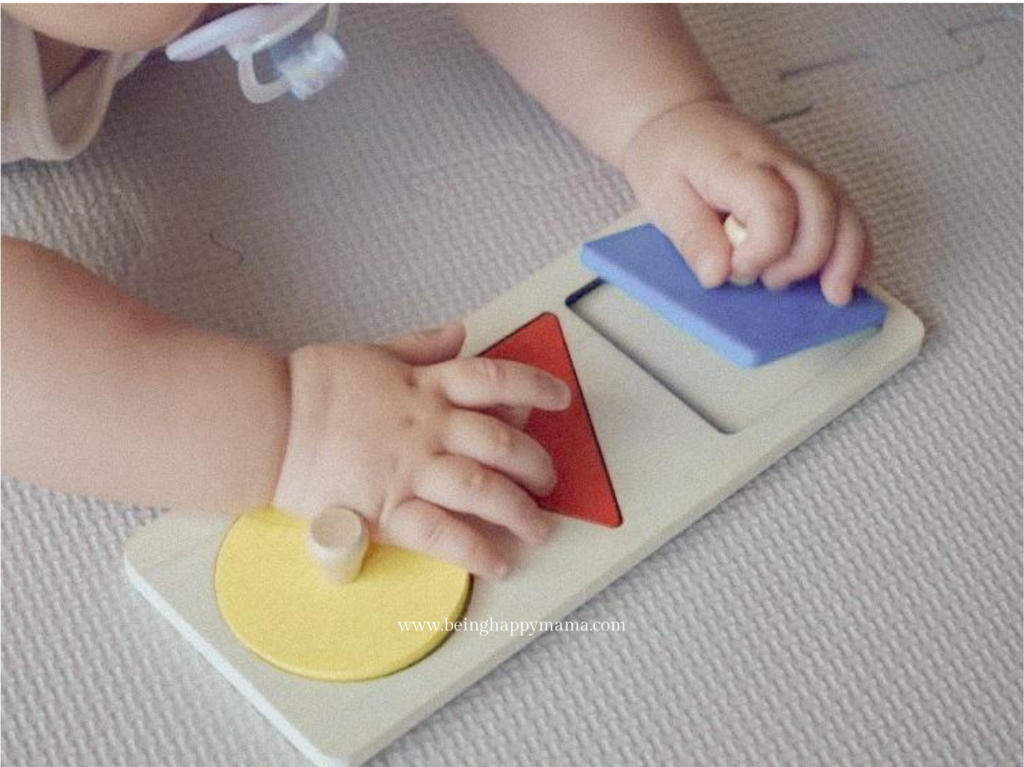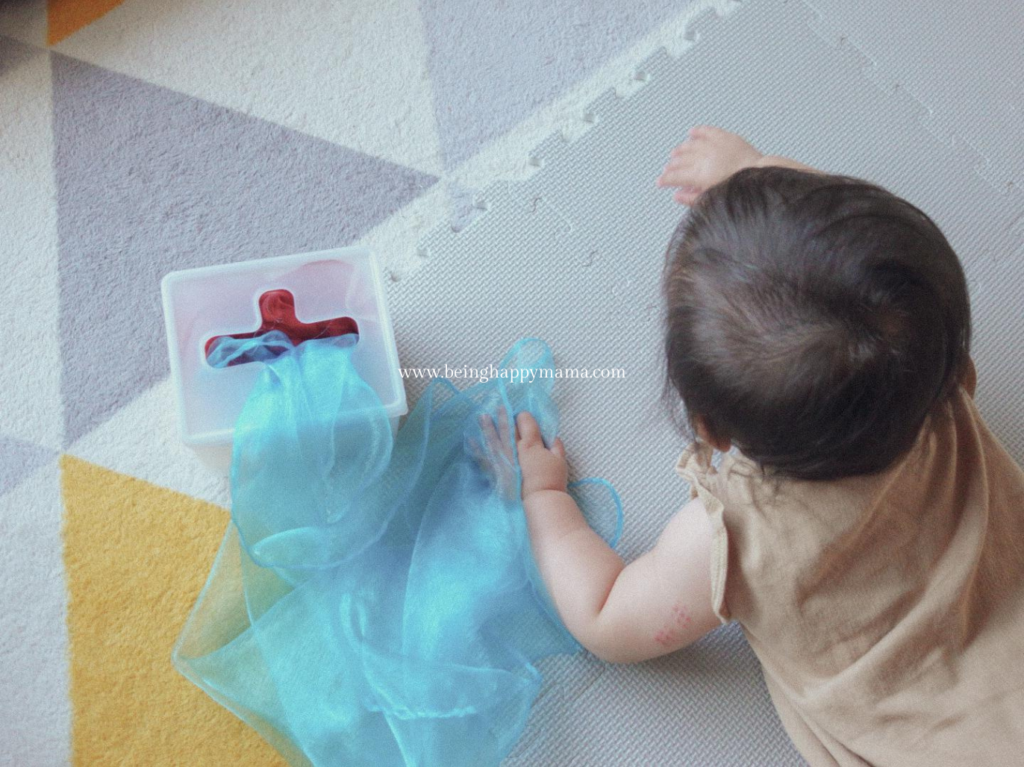Today, I’m excited to share what we’ve been up to with our little one in the world of Montessori education at 6 to 7 months old. At this stage, some babies can sit up, reach for and grab toys, and may even start crawling. As a result, some babies might find the activities they enjoyed at 5 months old a bit insufficient. So, in this post, I’ll share easy and simple Montessori activities to develop fine motor skills for babies aged 6 to 7 months.
Encouraging Exploration and Making Choices
With your baby’s newfound skills, they are becoming more mobile and curious about the world around them. This age is perfect for setting up a Montessori shelf since babies are developing their motor skills and curiosity. Allowing them some freedom to explore safely while reading books and engaging in activities together can be very beneficial.
Making Choices
In our home, we’ve prioritized empowering Rumi to make her own choices. We ask questions like, “Which toy do you want to play with?” or “Which book do you want to read?” Even at this age, she can touch and choose what interests her.

A Montessori shelf is a great way to practice self-selection. It’s a low and accessible open shelf, allowing the baby to see and reach their toys easily. Initially, I wondered if a newborn could pick a toy from the shelf, but now she loves it. Even a 6-7 month old can pick out toys they want to play with.

Self-selection is important because life is a series of choices, and we want our children to think for themselves and live a life with no regrets. Integrating decision-making practice into play from day one is crucial.
Learn more on how to create a Montessori-inspired playroom on my blog here.
Developing the Pincer Grasp
Fostering your child’s pincer grasp early on is essential. The pincer grasp involves using the pads of the fingers or the fingertips to hold tiny objects, using the index finger and thumb together.

Puzzles

Puzzles are a great way to practice pinching. In Montessori, picking up objects early on is important for developing fine motor skills.
Tissue Box

You don’t need fancy toys to start practicing pinching. Picking up and pulling a tissue from a tissue box is great for practicing. To avoid waste, I made an endless tissue box filled with cloth instead.
Tape Peeling

Tape peeling is another excellent way to practice pinching. All you need is a tape (I use a washi tape) and a surface to stick it on. It requires focus and fine finger control to peel the tape, helping strengthen the use of the thumb and index finger.
Plastic Wrapped Snacks

Babies love the sound of crinkling plastic, so they are also interested in individually wrapped snacks. Picking up a piece of snack from the box is a great way to exercise the pincer grasp. It may look like a mess, but it’s valuable practice.
Weaning Spoon

We started introducing solid foods around 5-6 months. After getting used to the spoon, Rumi took it from my hand and ate by herself. While I still feed her, giving her a spoon to hold helps her learn to bring it to her mouth. Although it can be messy, it’s a great learning experience.
Practicing Crawling
We tried various ways to practice crawling. At first, Rumi found it difficult to push off the floor, so we placed her feet near a wall for support and motivation. We also placed a favorite toy in front of her. Although she struggled initially, placing our hands on her feet helped her push off and move forward.
Visual Tracking
Slope Toy

By 6 months, babies can track objects that move up and down, left and right. We got Rumi a slope toy, perfect for enhancing her ability to focus and follow objects.
Observing Others Eat with a Spoon
Babies learn by imitating adults. If you are spoon feeding your baby, it is helpful for babies to watch others eat with a spoon. It helps babies practice visual tracking and motivates them to eat with a spoon. At 7 months, my daughter started to feed herself with a preloaded spoon which is a big progress!
Conclusion
So there you have it – simple Montessori activities to kickstart with your 6 to 7-month-old today. Investing in your baby’s early development through these activities not only nurtures essential skills but also fosters independence and curiosity. Embrace this journey of growth and discovery, knowing that each activity lays the foundation for a lifetime of learning.
If you have any questions or would like to share your experiences with activities for 6-7-month-olds, please feel free to comment below. Thank you for reading!
